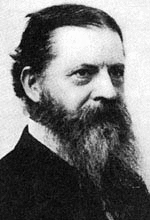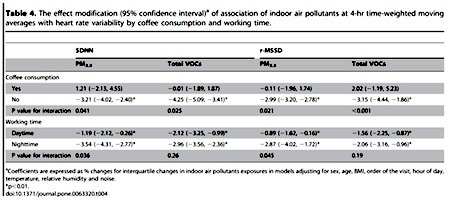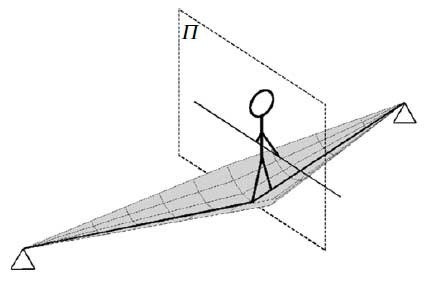Marc Abrahams's Blog, page 440
December 13, 2013
December mini-AIR: candy crackling, drift, and why drifters die
 The December issue of mini-AIR (our monthly e-mail newsletter just went out. (mini-AIR is a wee little supplement to the magazine) You can read it online, too. Topics include:
The December issue of mini-AIR (our monthly e-mail newsletter just went out. (mini-AIR is a wee little supplement to the magazine) You can read it online, too. Topics include:
Candy-cover crackling (physics)
Drift — in Dogs, Names, Pottery and Authors
The Ceramic Uvula Speaker Poet
Evaluating Where and Why Drifters Die
and more
It also has info about upcoming events.
Mel [pictured here] says, “It’s swell.”
mini-AIR is the simplest way to keep informed about Improbable and Ig Nobel news and events.
Want to have mini-AIR e-mailed to you every month? Just add yourself to the mini-AIR list.

Bacterial Transfer by Blowing Out Birthday Cake Candles
Knowledge accretes in bursts and puffs, as in this study:
“Bacterial Transfer by Blowing Out Birthday Cake Candles,” poster presented at Clemson University’s 5th Annual Focus on Creative Inquiry Poster Forum April 12, 2010.
Mentors: Paul Dawson and Inyee Han, Department of Food Science & Human Nutrition
Students: Danielle Lynn, Jenevieve Lackey, Johnson Baker, Sutton Fainschwartz, Aaron Pietzyk
“Bacteria are an unavoidable element of life, present in the environment and other living organisms. Whether benign or pathogenic, it is important to understand how bacteria is transferred and become familiar with measures for avoiding contamination. As such, this research project focused on the potential spread of bacteria when blowing out candles on a birthday cake. Our first procedure involved blowing on Petri dishes containing nutrient agar. A second procedure consisted of blowing on lit candles placed over a layer of icing. In a third procedure, we tested whether salivating before blowing out the candles over icing would affect the outcome. To simulate a realistic party atmosphere, this procedure included consuming a slice of fresh pizza prior to blowing on the candles. We determined that a higher level of bacteria was transferred with this procedure than the previous testing. These results led us to conclude that bacteria expelled from the mouth can, in fact, contaminate birthday cakes and other potential food samples.”

Pinning Down ‘The Cloud’
Here’s what Larry Ellison, CEO of the US software giant Oracle thought about ‘The Cloud’ in 2009 [* see note below]
Nowadays, if you happen to be involved in any way with computing technology, there’s a good chance that you might be making use of ‘The Cloud’. Perhaps at this very moment. But what exactly is ‘The Cloud’?
 Back in 2009, there were at least twenty different complementary and not-so-complementary ‘definitions’ drifting around – and in an attempt at clarification, they were carefully examined and cross-compared by a joint research team from Telefonica Investigacion y Desarrollo (Spain) and SAP Research (Ireland). Despite their best efforts though, the team ended their paper ‘A Break in the Clouds: Towards a Cloud Definition’ (ACM SIGGCOM Computer Communication Review, Vol. 39, Number 1) by concluding :
Back in 2009, there were at least twenty different complementary and not-so-complementary ‘definitions’ drifting around – and in an attempt at clarification, they were carefully examined and cross-compared by a joint research team from Telefonica Investigacion y Desarrollo (Spain) and SAP Research (Ireland). Despite their best efforts though, the team ended their paper ‘A Break in the Clouds: Towards a Cloud Definition’ (ACM SIGGCOM Computer Communication Review, Vol. 39, Number 1) by concluding :
“Clouds do not have a clear and complete definition in the literature yet …”
Then, in January 2011, the Computer Security Division of the Information Technology Laboratory at the US Govt.’s National Institute of Standards and Technology (NIST) floated a new, official, one – albeit in ‘draft’ form.
“Cloud computing is a model for enabling ubiquitous, convenient, on-demand network access to a shared pool of configurable computing resources (e.g., networks, servers, storage, applications, and services) that can be rapidly provisioned and released with minimal management effort or service provider interaction.”
That was then – and this is now, and it seems that despite the official clarification, not everyone is yet completely convinced that notions about ‘The Cloud’ are always 100% down to earth – here’s a quote from the relevant Wikipedia page [Nov. 2013] which hints at marketing hype :
“The popularity of the term can be attributed to its use in marketing to sell hosted services in the sense of application service provisioning that run client server software on a remote location.”
So, is ‘The Cloud’ an infrastructural paradigm-shift towards quasi-autonomous configurable synergic network provisioning? Or vaporous technobabble conjured up by marketeers in order to squeeze more cash out of gullible clients. Or neither? Or both? For more detailed information, there’s a 77 page report available from Gartner Inc. “… the world’s leading information technology research and advisory company.” [as self-proclaimed] It’s titled : ‘Hype Cycle for Cloud Computing, 2012′
“While clearly maturing and beyond the Peak of Inflated Expectations, cloud computing continues to be one of the most hyped subjects in IT. ”
[A copy of] The report is yours for US$1,995.00
Also see: Related, but only nominatively : The Cloud Appreciation Society
“We believe that clouds are unjustly maligned and that life would be immeasurably poorer without them.”
Note * Recent moves by Oracle suggest that he might have changed his mind somewhat.

December 12, 2013
Side Effects of Coffee: Carbon Monoxide
A further finding about side effects of coffee (chapter the three-thousandth-after-next):
“Carbon Monoxide From Domestic Coffee Roasting: A Case Report,” Joel B. Raffel and Joanne Thompson, Annals of Internal Medicine, vol. 159, no. 11, December 3, 2013. The authors are at Imperial College London.
BONUS: Coffee and convenience store workers and air pollution and lots of other stuff, all together

The effect of foreign sumo wrestlers on the body-mass/human-capital relationship in Japan
This economics study suggests that allowing foreigners to work as sumo wrestlers has been detrimental to the quality of native wrestlers’ wrestling:
“Is body mass human capital in sumo? Outcome of globalization and formation of human capital in Japan,” Eiji Yamamura, Journal of the Japanese and International Economies, epub November 22, 2013. The author, at Seinan Gakuin University, Fukuoka, Japan, explains:
“Using a data set for all sumo wrestlers in the post-World War II period, this paper investigates how wrestlers’ body mass index (BMI) is associated with their win rate and absence rate. Further, the effect of BMI is compared between an early period (before the emergence of foreign wrestlers) and later period (after the emergence of foreign wrestlers). After accounting for endogenous bias using instrumental variables, the key findings are that (1) there is no positive relationship between the BMI and win rate in either the early or later period and (2) there is a positive relationship between the BMI and absence rate in the later period but not in the early period. From the findings in this paper, I make the argument that an increase in the number of immigrants with human capital different from that of domestic labor leads the domestic labor to obtain human capital that does not match its characteristics, thereby reducing its performance.”
Here’s detail from the study:

(Thanks to Hiroshi Gunji for bringing this to our attention.)
BONUS: By the same author:
“Externality of young children on parents’ watching of anime: Evidence from Japanese micro data,” Eiji Yamamura, MPRA Paper 46878, 2013. The author reports that:
“it was found that people are more likely to watch anime when they have children aged less than 12 years.”

December 11, 2013
Complex Medical Insights: “Indoor Air Pollution, Nighttime Heart Rate Variability and Coffee Consumption among Convenient Store Workers”
Medical researchers, seeking insight, sometimes try to make simple sense of complex, difficult conglomerations of things that may or may not have effects on each other and on many other things. Sometimes coffee is involved, as is the case here:
“Indoor Air Pollution, Nighttime Heart Rate Variability and Coffee Consumption among Convenient Store Workers,” Kai-Jen Chuang, Hsiao-Chi Chuang, Lian-Yu Lin, PLoS One, 2013 Aug 15;8(8):e63320. The authors, at Taipei Medical University, report:
“The aim of this study was to investigate the association of HRV [heart rate variability] indices with indoor air pollution, working time and coffee consumption…. We recruited 60 young healthy convenient store workers to monitor indoor PM2.5 (particulate matter with an aerodynamic diameter ≤ 2.5 µm) exposures, coffee consumption (yes vs. no) and HRV indices during daytime (0700-1500 hours) and nighttime (2300-0700 hours)….
“CONCLUSIONS: …The effect of indoor PM2.5 on HRV indices may be modified by coffee consumption in young healthy convenient store workers.”

BONUS: Correlation is not causation, or so they say, some of them, sometimes.

Tightropes and slacklines – the math(s)
 A good number of people would probably find walking across a tightrope or slackline a decidedly non-trivial task. If it helps, assistance is at hand in the form of a comprehensive mathematical analysis which looks not only at the effect of the human on the rope, but also the rope on the human – in four dimensions.
A good number of people would probably find walking across a tightrope or slackline a decidedly non-trivial task. If it helps, assistance is at hand in the form of a comprehensive mathematical analysis which looks not only at the effect of the human on the rope, but also the rope on the human – in four dimensions.
See: ‘Balancing on tightropes and slacklines’ Journal of the Royal Society, Interface (2012) 9, 2097–2108. A joint investigation by Dr. Paolo. Paoletti (now at Centre for Engineering Dynamics, School of Engineering, University of Liverpool), along with L. Mahadevan (Lola England de Valpine Professor of Applied Mathematics, Professor of Organismic and Evolutionary Biology, and Professor of Physics, at the Department of Organismic and Evolutionary Biology, and Wyss Institute for Bioinspired Engineering, Harvard University, Cambridge US.) [The professor was co-recipient of the 2007 Ig Nobel physics prize for studying how sheets become wrinkled.]
“Our analysis of the open and closed-loop dynamics shows the existence of an optimal rope sag where balancing requires minimal effort, consistent with qualitative observations and suggestive of strategies for optimizing balancing performance while standing and walking.”
Improbable Clarification : A tightrope is a slackline that’s too tight, and a slackline is a tightrope that’s gone loose.
Also see, related, but bigger : Lateral excitation of bridges by balancing pedestrians. Proc. R. Soc. A 8 April 2009 vol. 465 no. 2104 pp. 1055-1073

December 10, 2013
The Higgs Boson and Roger Rabbit
Last night two of our editors were in the audience of a special event at the Coolidge Corner Cinema. Afterwards, one of them wrote (on Facebook) this appraisal:
Last night, we went to a screening of “Who Framed Roger Rabbit?” The movie was preceded by a talk by Melissa Franklin, chair of the Harvard Physics department and one of the discoverers of the Higgs boson. Dr. Franklin talked for about 20 minutes on the physics of cartoons, and the role of cartooning in physics. She was as funny as a professional comedian. She’s like Ellen Degeneres with an IQ of two thousand.
You just don’t GET that kind of entertainment in every city, folks.
Here’s a scene from the movie:
BONUS: Mark O’Donnell’s list, originally published in Esquire magazine, of “The Cartoon Laws of Physics“. In her talk, Professor Franklin lauded the robust subtleties of these laws.

Psychology discovery: The power of exposure to an American Flag
A photo showing an American flag has power over the minds of men and women, implies this study:
“A Single Exposure to the American Flag Shifts Support Toward Republicanism up to 8 Months Later,” Travis J. Carter [pictured here], Melissa J. Ferguson and Ran R. Hassin, Psychological Science, 2011 22: 1011. The authors at the University of Chicago, Cornell University, and Hebrew University, explain:
“396 participants were recruited through advertising in online social-networking sites (e.g., Facebook.com) to participate in an online survey in exchange for a $10 Amazon.com gift certificate…. For participants in the control condition, there was nothing in the corner of the survey (to view the survey, see Experimental Manipulations in the Supplemental Material). Except for this single presentation of the American flag on this particular survey, the procedure and materials in all sessions were identical for all participants…. Our results also demonstrate that a single exposure to a national flag can have wide-ranging effects. “
 The American Psychological Association, which publishes the journal Psychological Science, issued a press release about it, with the headline “Sneaky Stars and Stripes” and the flag photo you see here.
The American Psychological Association, which publishes the journal Psychological Science, issued a press release about it, with the headline “Sneaky Stars and Stripes” and the flag photo you see here.
BONUS: Dr. Carter also published a solo essay, in Psychology Today, with the headline “Despite What You Might Have Heard, Psychology is Science“, as we mentioned by way of giving context to a previous blog item.
UPDATE: Rolf Zwaan says “This finding has recently been massively non-replicated, as I describe here.”

Brenna Hassett joins LFHCfS (Luxuriant Flowing Hair Club for Scientists)
Brenda Hassett has joined the Luxuriant Flowing Hair Club for Scientists (LFHCfS). LFHCfS member Tharin Blumenschein, who nominated her, says:
My friend Brenna Hassett posted this photo on Facebook, while admitting: “I have big hair”. It is proof of her luxuriant, flowing hair. She’s a postdoc at the Natural History Museum, in London. Her professional details can be found in her professional page, with her hair carefully disguised.
Brenna Hassett, Pd.D., LFHCfS
Postdoc
Earth Sciences Department
Vertebrates and Anthropology Palaeobiology
Natural History Museum
London, UK


Marc Abrahams's Blog
- Marc Abrahams's profile
- 14 followers



